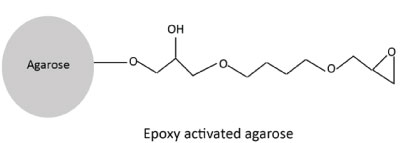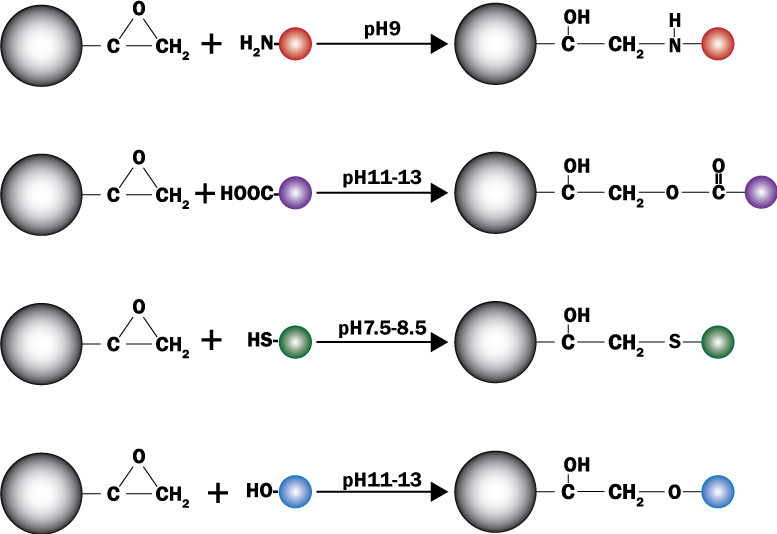 Affinity chromatography is the most popular and widely used method for purification of biomolecules including proteins, antibodies, lectins, carbohydrates, nucleic acids and glycoproteins. Affinity purification is based upon specific surface interactions among biological molecules such as antigen-antibody, enzyme-ligand etc. These specific surface interactions enable the purification of molecules from 1000 to 10,000 fold in a single step. In affinity chromatography, the ligand, antigen or one of the interacting molecules is covalently bound to the matrix and is used as a bait to fish out the target protein from any complex pool of proteins including cell or tissue lysate.
Affinity chromatography is the most popular and widely used method for purification of biomolecules including proteins, antibodies, lectins, carbohydrates, nucleic acids and glycoproteins. Affinity purification is based upon specific surface interactions among biological molecules such as antigen-antibody, enzyme-ligand etc. These specific surface interactions enable the purification of molecules from 1000 to 10,000 fold in a single step. In affinity chromatography, the ligand, antigen or one of the interacting molecules is covalently bound to the matrix and is used as a bait to fish out the target protein from any complex pool of proteins including cell or tissue lysate.
The matrix, such as agarose, needs to be activated for covalent binding of ligand for affinity purification. There are several pre-activated resins available commercially with different coupling chemistries. These pre-activated resins give wide range of options for scientists to choose from for binding ligand of their choice to purify the target protein. Among them the epoxide chemistry is the most versatile as it can immobilize ligands via amine, thiol and hydroxyl groups.
Epoxide-activated agarose is prepared by immobilization of oxiranes such as 1,4-butanediol diglycidyl ether onto matrix. This pre-activated resin provide hydrophilic 12 atom spacer arm.
Epoxide-activated agarose offers several advantages:
Epoxide-activated agarose can bind wide range of macromolecules

Epoxide-activated agarose has high density of epoxide groups which reacts with nucleophiles in a ring-opening process. The epoxide groups react with primary amines, thiols or hydroxyl groups to form stable secondary amine, thioester and ether bonds respectively. The epoxides groups readily react with thiol groups and require buffered system close to physiological pH. The epoxide groups require high pH conditions for reaction with hydroxyl groups and moderate alkaline conditions for reaction with amine groups.
Since Epoxy-activated agarose can immobilize ligands via amine, thiol and hydroxyl groups, it can bind to variety of macro biomolecules including proteins, carbohydrates, lectins, glycoproteins, nucleic acids.
Epoxide-activated agarose can bind small ligands including disaccharides, monosaccharides and peptides
Epoxide-activates agarose has long hydrophilic spacer arm that favors binding of small ligands to the matrix including but not limiting to monosaccharide, peptides, and disaccharides. For example oxiranes such as 1, 4-butanediol diglycidyl ether provides 12 atom hydrophilic spacer to the matrix.
Limitations: The coupling of ligands with amine or hydroxyl groups to epoxy-activated resin require alkaline conditions, so its not recommended for coupling of proteins that are sensitive to alkaline pH. Epoxy-activated resins are not stable in aqueous media and so are supplied commercially in dry form and its recommended to use them directly after rehydration for coupling.






